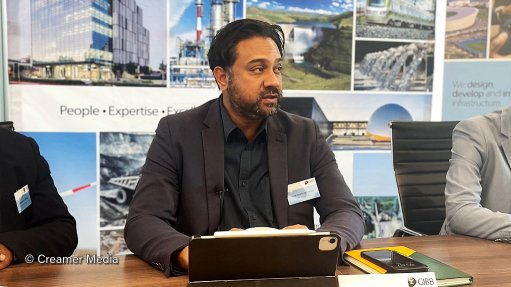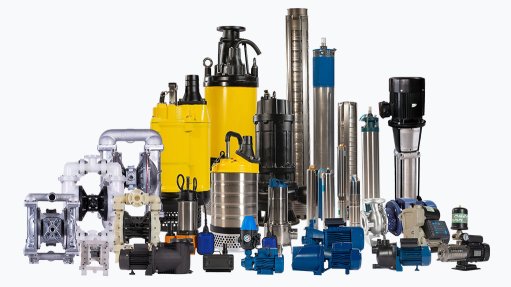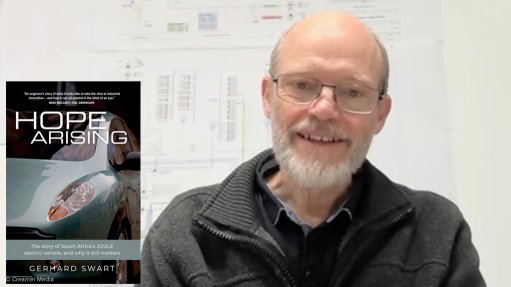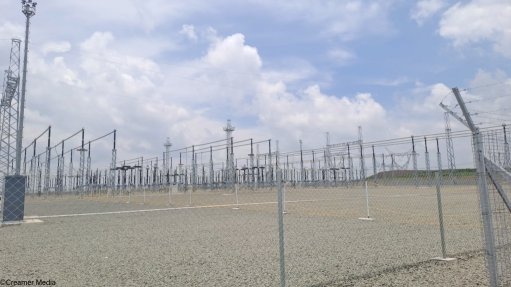CSIR develops cost-effective building block for houses using construction waste
Research and development organisation the Council for Scientific and Industrial Research (CSIR) has partnered with nonprofit organisation Use-It Waste Beneficiation and building solutions company Key Bricks to develop a prototype green building block made from construction waste material that can be used to build low-cost houses.
The innovation was funded through the Department of Science, Technology and Innovation (DSTI) Circular Economy Demonstration Fund, which is aimed at demonstrating proven circular economy interventions, including technologies, innovative process improvements and social innovations that have not yet achieved scale or impact in South Africa.
The partner organisations demonstrated to DSTI officials on April 11 the process of manufacturing the innovative building blocks, starting from the crushing of waste glass and building rubble to the finished block and, finally, the low-cost housing structure.
The green block contains 70% recycled waste content, including crushed waste glass, as well as construction and demolition waste. The block itself is 100% recyclable.
The bricks are also designed to interlock, requiring no cement between layers, allowing for the building to be easily constructed with limited building experience and, if needed, the structure can later be deconstructed and the blocks reused at another location. Each block features internal hollows, which, when stacked, create channels for installation of electrical and water pipes, reducing the need to cut grooves, also known as chasing, thereby ensuring that the blocks remain intact.
The blocks came from the need to find local markets for waste glass and building rubble in KwaZulu-Natal, explain CSIR senior researcher in sustainability economics and waste Aubrey Muswema, Use-it MD Belinda Putterill and Key Bricks CEO Matt Olivier.
“It’s not viable to transport waste glass from KZN to Gauteng for recycling, the margins on this are just too slim, resulting in a lot of this waste remaining uncollected and impacting the environment. We needed to find ways to use glass locally in KZN,” says Putterill.
Cities, towns and villages across the country are also plagued with the illegal dumping of building rubble in open spaces, and these blocks use crushed waste glass, and construction and demolition waste, thereby reducing the need for conventional virgin materials, she adds.
The block is cost-effective, and also saves construction time and requires minimal labour and building experience. The top structure was put up by relatively unskilled labour from foundation stage to the roof within seven days, which is only possible because of the interlocking nature of the faceted blocks, says Muswema.
By using waste as a resource, this interlocking block can unlock new business opportunities in the construction industry. Local businesses and value chains can benefit from the potential to generate additional revenue streams.
The bricks also have the potential to accelerate social relief efforts by addressing the country’s housing backlog, while helping to keep cities, towns and villages clean, he adds.
The block-making machine has been demonstrated to the private sector, municipal officials, housing-sector representatives and other small, medium-sized and microenterprises in the building sector.
“The circular economy holds enormous potential for South Africa,” says CSIR principal researcher and manager of Circular Innovation South Africa (CISA) Professor Linda Godfrey.
CISA is tasked by the DSTI to identify and support innovative circular economy demonstration projects through the recently launched Circular Economy Demonstration Fund.
“The circular economy studies published by the CSIR highlight that while the circular economy is not new to South Africa, we have not achieved the scale for meaningful impact.
“The aim of the Circular Economy Demonstration Fund is to partner universities and science councils with the private sector, to help business and industry demonstrate, de-risk and scale circular innovations, and in so doing, unlock much needed socioeconomic opportunities,” she says.
Article Enquiry
Email Article
Save Article
Feedback
To advertise email advertising@creamermedia.co.za or click here
Comments
Press Office
Announcements
What's On
Subscribe to improve your user experience...
Option 1 (equivalent of R125 a month):
Receive a weekly copy of Creamer Media's Engineering News & Mining Weekly magazine
(print copy for those in South Africa and e-magazine for those outside of South Africa)
Receive daily email newsletters
Access to full search results
Access archive of magazine back copies
Access to Projects in Progress
Access to ONE Research Report of your choice in PDF format
Option 2 (equivalent of R375 a month):
All benefits from Option 1
PLUS
Access to Creamer Media's Research Channel Africa for ALL Research Reports, in PDF format, on various industrial and mining sectors
including Electricity; Water; Energy Transition; Hydrogen; Roads, Rail and Ports; Coal; Gold; Platinum; Battery Metals; etc.
Already a subscriber?
Forgotten your password?
Receive weekly copy of Creamer Media's Engineering News & Mining Weekly magazine (print copy for those in South Africa and e-magazine for those outside of South Africa)
➕
Recieve daily email newsletters
➕
Access to full search results
➕
Access archive of magazine back copies
➕
Access to Projects in Progress
➕
Access to ONE Research Report of your choice in PDF format
RESEARCH CHANNEL AFRICA
R4500 (equivalent of R375 a month)
SUBSCRIBEAll benefits from Option 1
➕
Access to Creamer Media's Research Channel Africa for ALL Research Reports on various industrial and mining sectors, in PDF format, including on:
Electricity
➕
Water
➕
Energy Transition
➕
Hydrogen
➕
Roads, Rail and Ports
➕
Coal
➕
Gold
➕
Platinum
➕
Battery Metals
➕
etc.
Receive all benefits from Option 1 or Option 2 delivered to numerous people at your company
➕
Multiple User names and Passwords for simultaneous log-ins
➕
Intranet integration access to all in your organisation


















